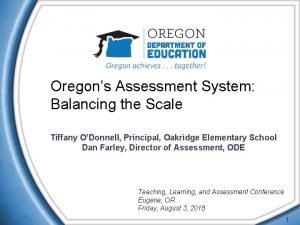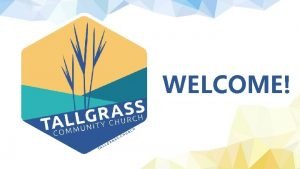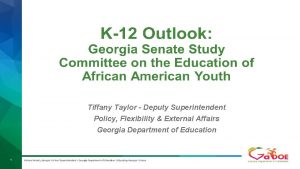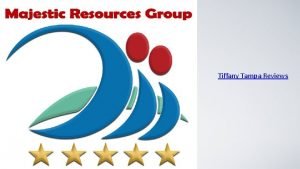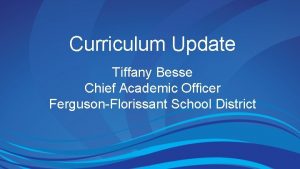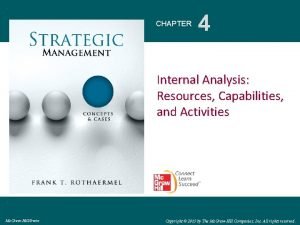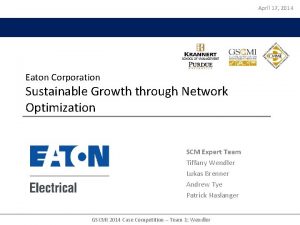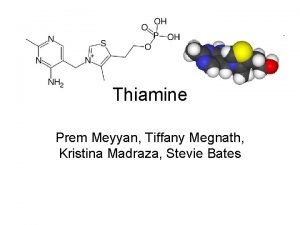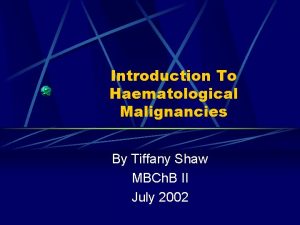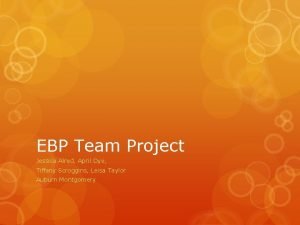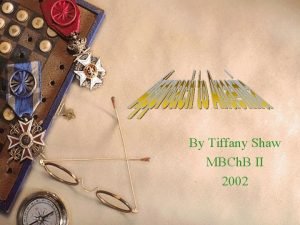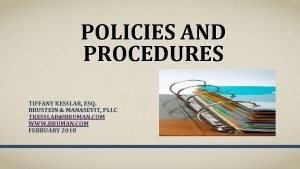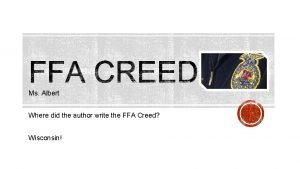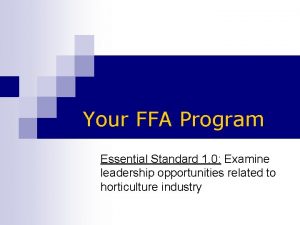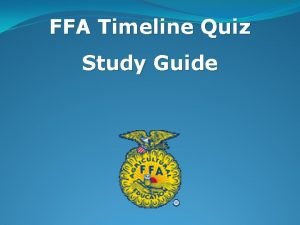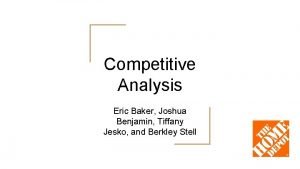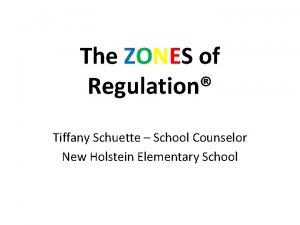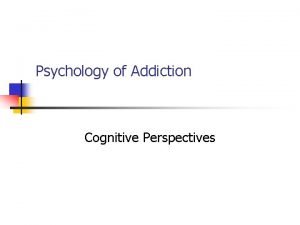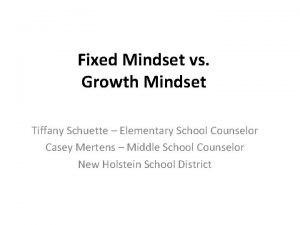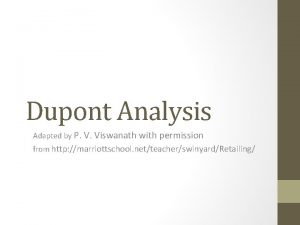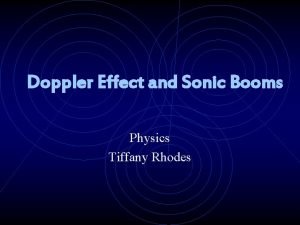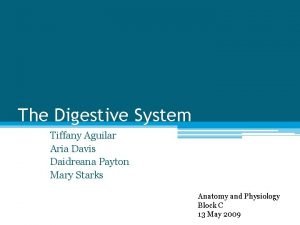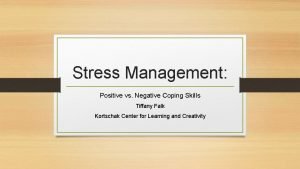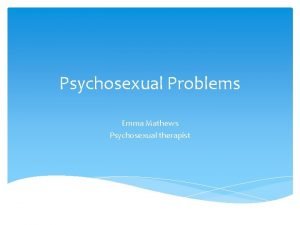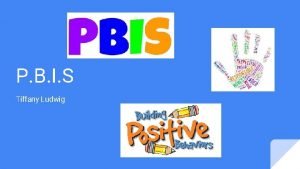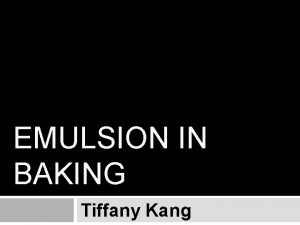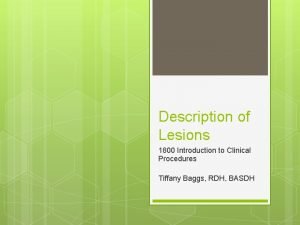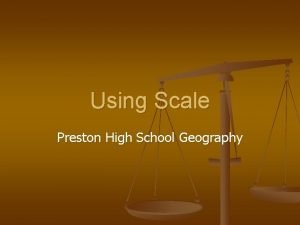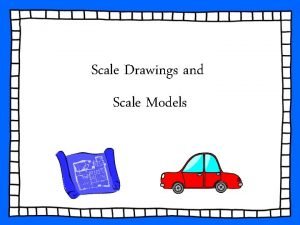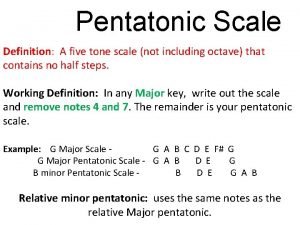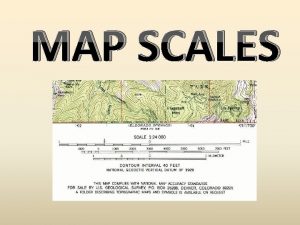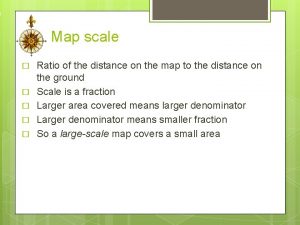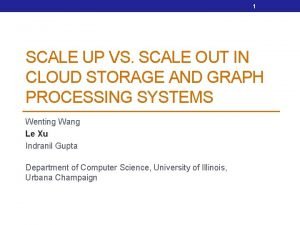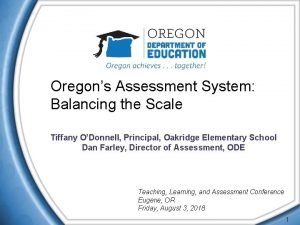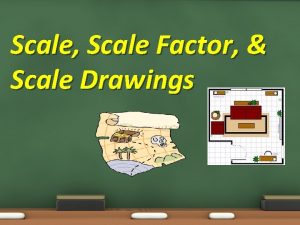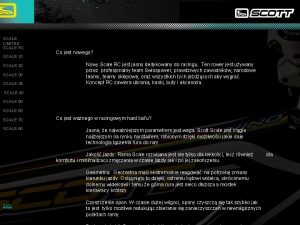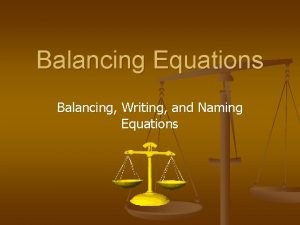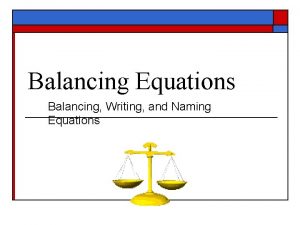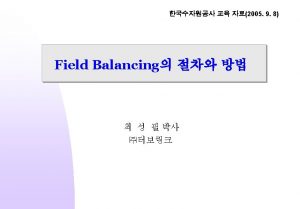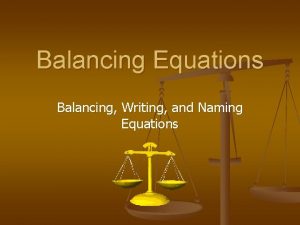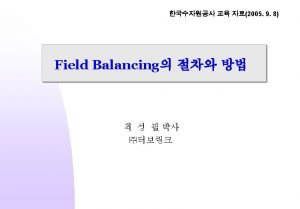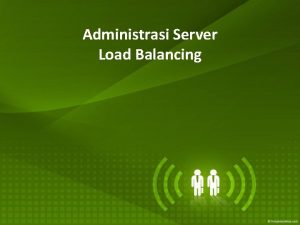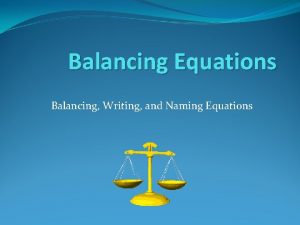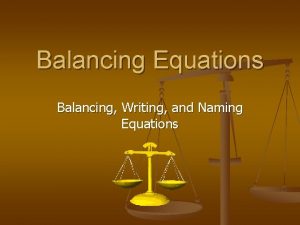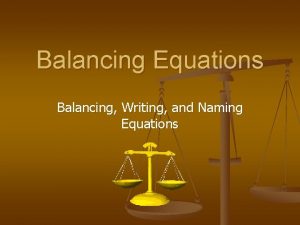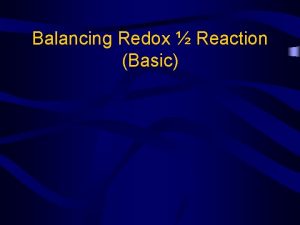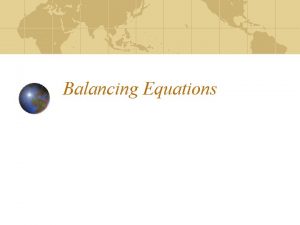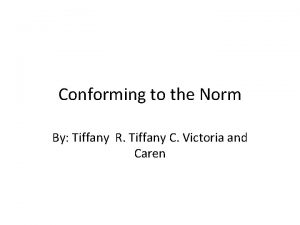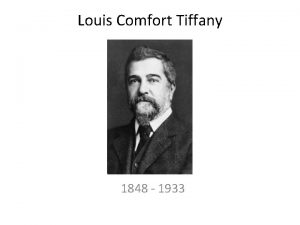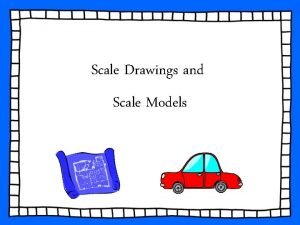Oregons Assessment System Balancing the Scale Tiffany ODonnell

Oregon’s Assessment System: Balancing the Scale Tiffany O’Donnell, Principal, Oakridge Elementary School Dan Farley, Director of Assessment, ODE Teaching, Learning, and Assessment Conference Eugene, OR Friday, August 3, 2018 1

Step 1: www. Oregon. Ed. Net. org Login or Create an Account

Step 2: www. Oregon. Ed. Net. org Click the Featured Group

Step 3: www. Oregon. Ed. Net. org Click Join Group

Agenda ODE Assessment System Vision • Balanced, Comprehensive Assessment System in Oregon [10: 55 – 11: 25 AM] A District Implementation Perspective • Oakridge Elementary School, Oregon Formative Assessment for Students and Teachers (OFAST) Project Participants [11: 25 -11: 50 AM] Questions [11: 50 – 12: 00 PM] 5

Connection to Prior Learning Table/Row Activity - 5 mins Please consider the following three questions and discuss: – What is formative assessment? – What is interim/benchmark assessment? – What is summative assessment? 6

Success Criteria During this workshop, participants will: – Develop assessment literacy – Learn about ODE’s balanced assessment vision – Become familiar with OFAST resources – Learn from one school that is working on formative assessment practices – Develop understanding of the critical role of PLCs and sustained effort in this work

Assessment Foundation • Assessments are generally designed for a singular purpose and should be used only for that purpose • High stakes decisions should not rest on a single test result or source of evidence • Assessments are tools; they can be used correctly or incorrectly

Assessment Literacy • Cannot have an accurate discussion without a shared understanding and vocabulary • Assessment terms are often inconsistently applied from research to practice – Examples: • Significant • Formative

Balanced Assessment Systems The goal of balanced assessment systems is to utilize a variety of measures and types of assessment to answer different questions across levels of the educational system. Design a system that: • takes advantage of the specific strengths of each type of assessment, • provides information about the learning of individual and groups of students, • provides information that administrators, parents, teachers and students can use to further learning, and • provides accountability information by which administrators, legislators, and the general public gauge the extent to which public resources are being used to serve the public good. (Brookhart, 2013) 10

Coordinated Assessment System 11

Assessment Literacy • Assessment for learning • Guide instruction ü Formative assessment practices ü Interim/benchmark assessments* *can also be used as an assessment of learning • Assessment of learning • Determine level of mastery ü End-of-course assessment ü Summative assessment NOTE: See HANDOUT on OEN for definitions and examples

*Classroom Summative/Interim/Benchmark assessments may serve multiple purposes 13

*Classroom Summative/Interim/Benchmark assessments may serve multiple purposes 14

*Classroom Summative/Interim/Benchmark assessments may serve multiple purposes 15

Working Toward a Balanced System Formative Assessment Practices Interim/ Benchmark Assessments Summative State Tests Rigorous Content Standards Assessment Professional Learning Resources Educator Engagement (Policy and Development) State Test Administration and Use 16

Formative Assessment Practices • Not assessments, practices: Formative assessment is a planned, ongoing process used by all students and teachers during learning and teaching to elicit and use evidence of student learning to improve student understanding of intended disciplinary learning outcomes, and support students to become more self-directed learners. – Council of Chief State School Officers 17

OFAST • Oregon Formative Assessment for Students and Teachers (OFAST) Introduction – One of several projects led by Cristen Mc. Lean in 2015 -17 to support ODE’s long-term vision – Formative assessment video – Whole Group Activity – 5 mins 18

Formative Assessment Practices

Formative Assessment Benefits • Increased student engagement and motivation • Increased student achievement • Initial learning curve is steep, but teachers report that implementing formative assessment practices saves time and energy over the long run • Students are doing the work!

Professional Learning Resources • Openly licensed, free professional learning content posted here: http: //bit. ly/SCA_page and updated each spring. • Formative Assessment • 60 -minute introductory professional learning community (PLC) session resources; English learner resources. • Five 5 -week in depth blended learning modules. • Performance Assessment • Online bank with hundreds of vetted performance assessments. • Interim Assessment • A graduate course worth of content focused on defensible methods of utilizing interim/benchmark assessments. • State Assessment • Resources for four 6 -hour workshops scoring student work from Smarter Balanced (ELA and Math, elementary and secondary). • Coming soon: a module on target report use. 21

Professional Learning Opportunities • ODE Assessment Specialists will coordinate with ESDs to provide each region with a menu of professional learning options. • ODE is also working with the Regional Education Network to provide training at LESD on October 12, 2018 • The professional learning resources are openly licensed and accompanied with facilitator resources so that they can be used within districts following the initial workshop. 22

Test Purposes and Uses – Interim/Benchmark • Periodic check ins to see if students have mastered content that has been taught • Supports teacher engagement in and understanding of the standards • Can be used to define patterns of underachievement based on a more narrow set of learning expectations that might guide re-teaching opportunities

Interim/Benchmark Benefits • Students competence with software and tools “I believe teachers value students being familiar with the test delivery system. ” Renee, Idaho Falls School District • • Practice with various accommodations and designated supports Pocatello School District Students and teachers become more familiar with item types “I never asked my students to do that!” Andi, Idaho Arts Charter School • Reduced anxiety on the end of year assessment “Our students said it made all the difference in the world. ” Georgeanne, Lakeland School District Assessment Coordinator • • Reduction in summative testing time “Students felt more prepared, more relaxed, and more committed to doing well. It also cut our testing time on ISAT way down. ” Sherry, Marsh Valley Improved student ownership of learning “Dad, look how good I did, I was always afraid of these tests before. ” Mountain Home student

High School Example • 62% low income • Initial training in September 1, 2016 • Follow up training included teachers in November 11, 2016 • Data from Interim blocks reviewed as well as Digital Library and other instructional resources. • Idaho SDE Content Coordinators participated for instructional focus 2015 2016 2017 Gr. 10 ELA/Literacy 70% 71% 90% proficient! Gr. 10 Mathematics 25% 29% 73% All grades ELA/Lit 42% 39% 47% All grades Math 26% 27% 34% • Grade 6 ELA/Literacy 16% greater proficiency • Grade 7 Math 18% greater proficiency

Test Purposes and Uses Summative • ELA and Math – Annual assessment of classroom, school, district, and state level learning that has already occurred – Patterns of underachievement are identified for sending and receiving teachers – Not relevant for guiding classroom instruction in the moment

Using Target Reports

Suggested Data Review Cycle Examine summative data of incoming students in the fall Determine if / what additional detail is needed Administer Interim Assessment Blocks (IABs) from previous grade, as needed Examine class, student, and item details from IABs Identify supplemental Digital Library tasks / activities formative use Reference Item Specifications task models (Special thanks to Nancy Thomas Price for sharing this information from Idaho)
![OFAST – School Perspective [11: 35 -11: 50 AM] Tiffany O’Donnell, Oakridge Elementary Principal OFAST – School Perspective [11: 35 -11: 50 AM] Tiffany O’Donnell, Oakridge Elementary Principal](http://slidetodoc.com/presentation_image_h/d7c919514ba23d4b227a61929d2ff68f/image-29.jpg)
OFAST – School Perspective [11: 35 -11: 50 AM] Tiffany O’Donnell, Oakridge Elementary Principal

Oakridge Elementary - OFAST • • • Oakridge Elementary School K-6 th 325 students 76% Free and Reduced Lunch 86% White, 8% Hispanic/Latino 17% mobility 3500 community population that is 50 miles from urban areas • Former Focus School 2012 to 2017

OFAST grant participation • 2016 -2017 13/16 (81%) Teachers yearlong training, supported training • 2017 -2018 13/16 (81%) Teachers including 3 new teachers and 1 new to OFAST in independent training

Implementation Challenges • Time for… – study – planning/revising lesson plans – Sharing and supporting each other – Observations and feedback • Differing implementation levels & support needs • Resistance to new methods

Implementation Solutions • Monthly Community of Practice Meetings • Consistent Formats for lesson plans & Feedback Loop posters • Pre-service and Quarterly team lesson planning sessions • Monthly observations and feedback on implementation individually and as a school

Initial Outcomes • Monthly COP meetings spread best practices and sharing of resources • Pre-service and quarterly 3 hour lesson planning sessions produced aligned practices, power standard focus and benchmarks • 33% of Reading and 46% of Math instruction using “Feedback Loop”

Initial Outcomes • Increased SBAC achievement +6. 4 to +11. 2% • Increased regular attenders 3. 48% • Increased teamwork and sense of shared purpose; synergy & energy • Commitment to increasing PLC “Priority Work”

Sustaining the Effort • Participation in Rural Network PLC Teacher Leaders & Leadership • 2 sessions 70 minutes uninterrupted, scaffolded and supported PLC time for grade level teams each month

Sustaining the Effort • Pre-session & quarterly PLC sessions • Total of 47 PLC hours this school year • 1/2 Time Instructional Coach with a ½ time Instructional Coach for the Coach • Scaffolded and differentiated support to meet grade level teams where they are

Sustaining the Effort • Increased teacher team agency in curriculum & lesson planning • Goal focus – Integrated Reading, Math, Science & Social Studies units aligned to CCSS – 3 common grade level assessments CCSS aligned for Reading per team per quarter – Common Intervention/small group instructional planning

Resources Needed • Build Stakeholder Commitment: school board, technology, district office, parents and staff • PLC PD and peer observation (both in district and in other districts) • Leadership PD and support for administration, instructional leaders, special education

Timeline • August 29 PLC Priority Work 5 hours • September 20 -21, November 29 -30, January 22 -23, March 21 -22 Teacher Leader PD • October 12 OFAST Introduction new staff • October 19, January 25, April 5 Leadership Mini Forum







Assessments Revisited Team Activity – 5 mins • Discuss your understanding of: formative assessment, interim/benchmark assessment, & summative assessment – – Did your understanding develop? How might this impact practice? How might this impact how you discuss assessment? Does your school provide sufficient time for PLCs? • Refer to the Assessment Definitions handout on OEN 47
![Questions and Answers [11: 50 – 12: 00 PM] Questions and Answers [11: 50 – 12: 00 PM]](http://slidetodoc.com/presentation_image_h/d7c919514ba23d4b227a61929d2ff68f/image-48.jpg)
Questions and Answers [11: 50 – 12: 00 PM]

Contact Information Tiffany O’Donnell, Principal, Oakridge Elementary School todonnell@oakridge. k 12. or. us Dan Farley Director of Assessment dan. farley@ode. state. or. us 503. 947. 5721 49
- Slides: 49
